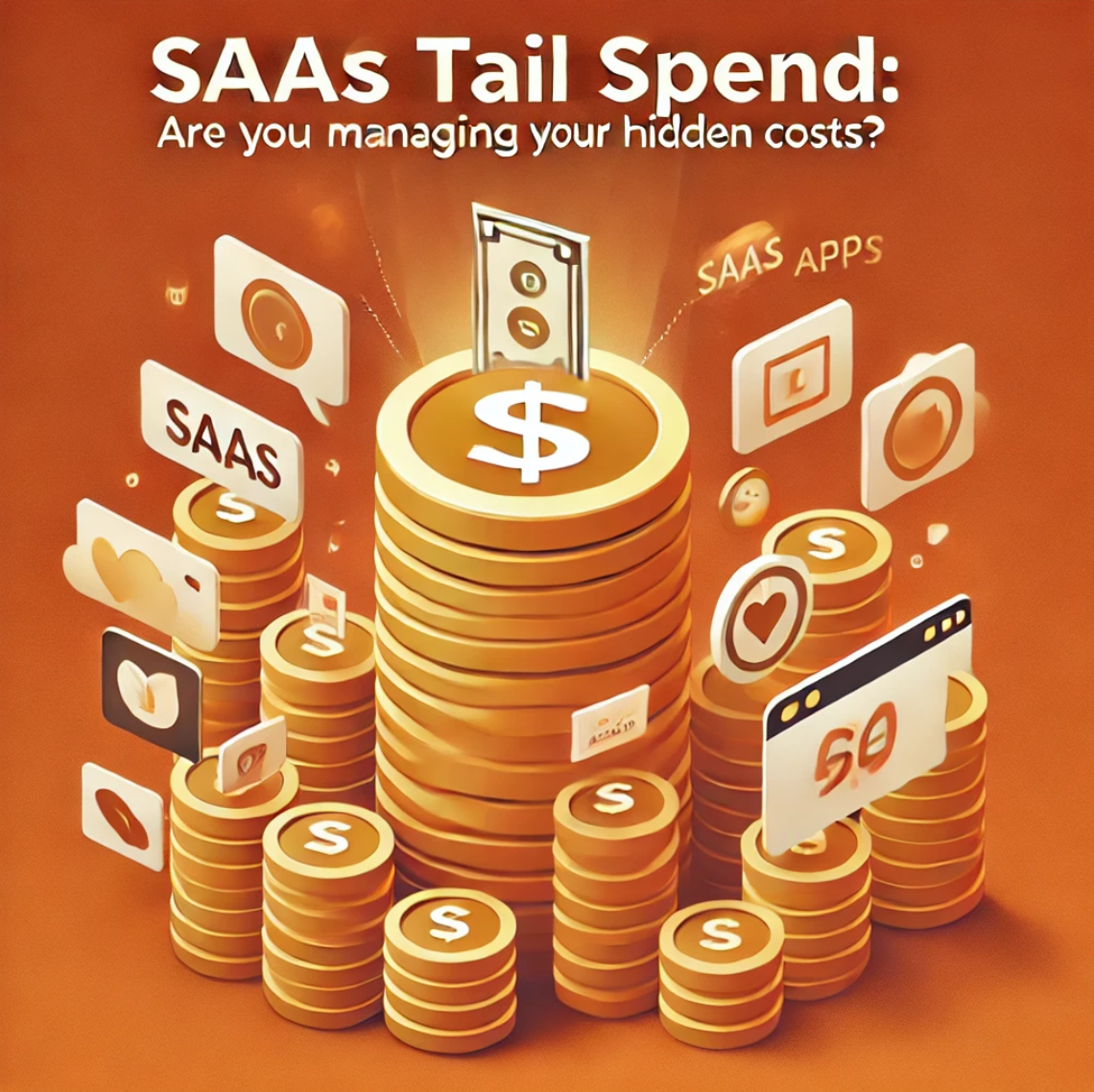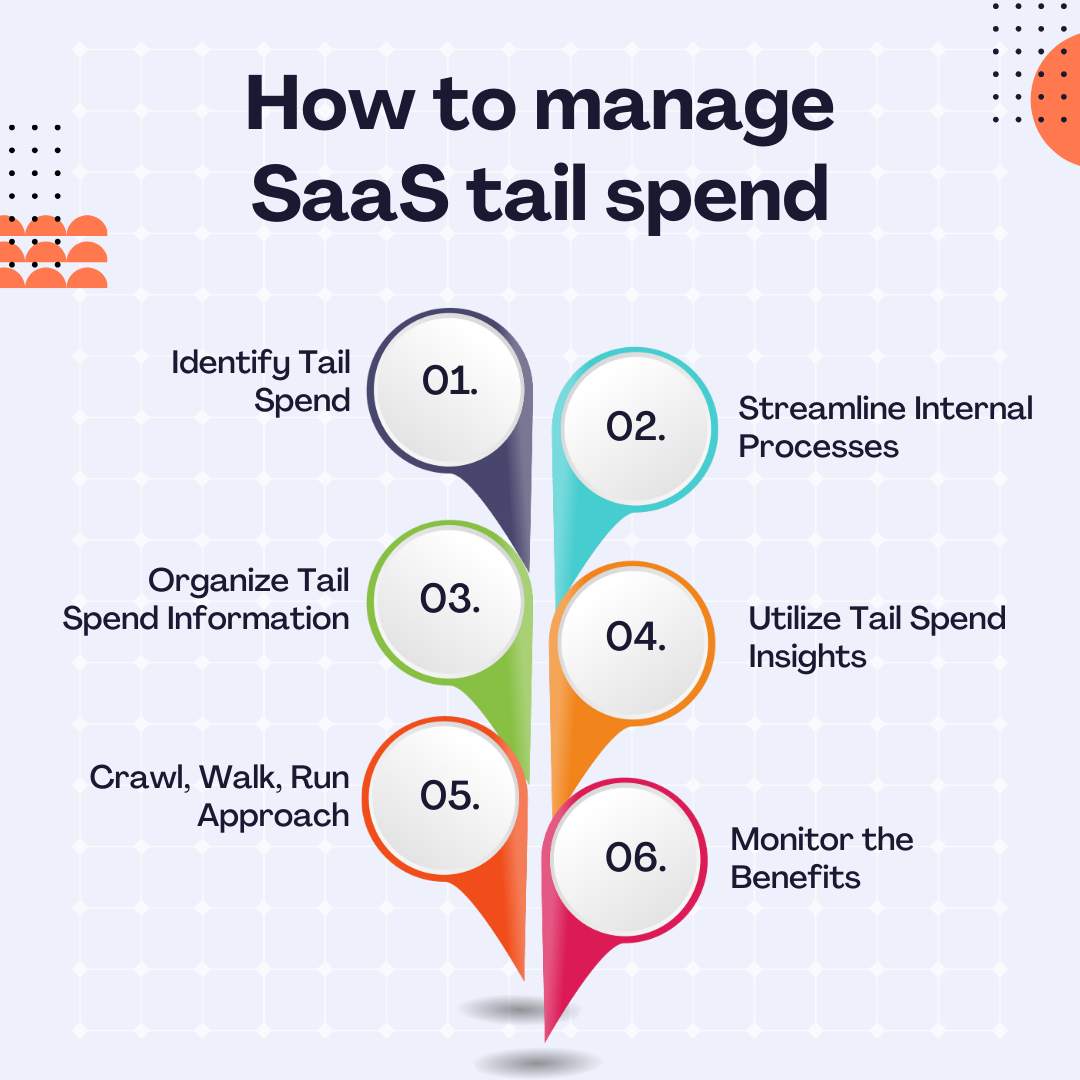What is SaaS Tail Spend and Why IT Leaders Should Avoid It?

Table of Contents
Introduction
Tail spend has always been a challenge for IT and procurement leaders, representing a high volume of low-value purchases that often fly under the radar. While these purchases typically make up only about 20% of total spend, they account for a staggering 80% of transactions, creating a significant management burden. However, innovative SaaS management solutions are now available that can enhance tail spend management and transparency without adding complexity. These tools empower businesses to unlock substantial cost savings, with potential improvements ranging from 5% to 20% of total tail spend, according to a Deloitte study.</p>
Let’s explore SaaS tail spend, its challenges, and how IT leaders can effectively manage it to avoid unnecessary costs and inefficiencies.
What is SaaS Tail Spend?
SaaS tail spend refers to the portion of an organization’s IT budget that is allocated to a multitude of low-cost, infrequent, and often underutilized software subscriptions. This type of spend can go unnoticed for several reasons:
- Unforeseen Purchases: Departments or individual employees may acquire software outside established procurement channels, leading to shadow IT or maverick spending.
- Lack of Centralization: These subscriptions often remain untracked within a central system, resulting in a fragmented view of overall SaaS spending.
- Underutilization: Some subscriptions may go completely unused, while others may have inactive licenses or features, leading to wasted resources.
Even though each subscription might seem insignificant on its own, the cumulative effect of SaaS tail spend can be substantial. The lack of oversight can lead to hidden inefficiencies, such as redundant subscriptions and unauthorized software purchases.
Understanding the 80/20 Rule
The 80/20 rule, or Pareto principle, is a concept that suggests roughly 80% of effects come from 20% of causes. In the context of SaaS management, this means that a significant portion of your budget may be consumed by numerous low-value subscriptions. Focusing on managing these frequent, low-cost purchases can lead to better cost control and efficiency.
Challenges Posed by Unmanaged SaaS Tail Spend

Although individual SaaS subscriptions may seem insignificant, unchecked tail spend can lead to several issues:
- Lack of Visibility: Tail spend often occurs outside of established procurement processes, making it difficult to track and analyze. This obscurity can prevent businesses from identifying spending patterns, negotiating better deals with vendors, and ensuring compliance with company policies.
- Inefficiencies: The high volume of transactions and numerous vendors associated with tail spend can lead to administrative burdens, such as processing purchase orders and managing invoices.
- Hidden Costs: Unmonitored tail spend can lead to inefficiencies and even fraudulent activity, with maverick spending and shadow IT adding unnecessary costs.
- Missed Savings Opportunities: Without proper oversight, businesses might overlook potential cost savings. Negotiating discounts with vendors can lead to significant savings that are often missed with tail spend.
- Compliance Risks: Uncontrolled tail spend purchases increase the risk of non-compliance with company policies, leading to issues such as duplicate payments and security breaches.
Benefits of a SaaS Spend Management Program
A comprehensive tail spend management strategy for SaaS can result in valuable benefits, including:
- Cost Optimization: Gaining actionable insights into SaaS usage patterns allows organizations to identify underutilized subscriptions, negotiate better pricing, and consolidate redundant services.
- Improved Visibility and Control: A SaaS Management Platform (SMP) can centralize all subscriptions, providing a clear overview of spending across departments and teams.
- Streamlined Procurement: Establishing clear approval processes for SaaS purchases eliminates maverick spending and ensures all subscriptions adhere to company policies.
- Better Spend Decisions: A comprehensive management strategy provides valuable data on SaaS usage, which can be leveraged to standardize software across departments and potentially reduce costs.
- Improved Software Utilization: Insights into actual software usage can help optimize license allocations and ensure that everyone gets the most out of the software they’re paying for.
How to Manage SaaS Tail Spend in 6 Steps

- Identify Your Tail Spend: Gather data from all purchasing channels to identify SaaS tail spend.
- Streamline Internal Processes: Eliminate bottlenecks and standardize procedures for SaaS purchases.
- Organize Tail Spend Information: Consolidate data into a central repository for easy analysis.
- Utilize Tail Spend Insights: Analyze data to identify cost-saving opportunities and standardize software across the organization.
- Crawl, Walk, Run Approach: Start with a pilot program and gradually expand the management strategy.
- Monitor the Benefits: Track key metrics to measure the effectiveness of your tail spend management program.
How a SaaS Management Platform Can Help
A SaaS Management Platform (SMP) is crucial for managing tail spend effectively. Here’s how it can help:
- Enhanced Visibility and Control: Centralized view of all SaaS subscriptions and automated discovery of untracked software.
- Streamlined Procurement Processes: Automation of workflows and standardized approval processes.
- Actionable Insights and Cost Optimization: Advanced analytics for better spend decisions and optimized budgeting.
By implementing a robust tail spend management strategy with the support of an SMP, businesses can take control of their SaaS expenses, optimize costs, and maximize the value derived from every subscription.

 Never miss a story from us, subscribe to our newsletter
Never miss a story from us, subscribe to our newsletter